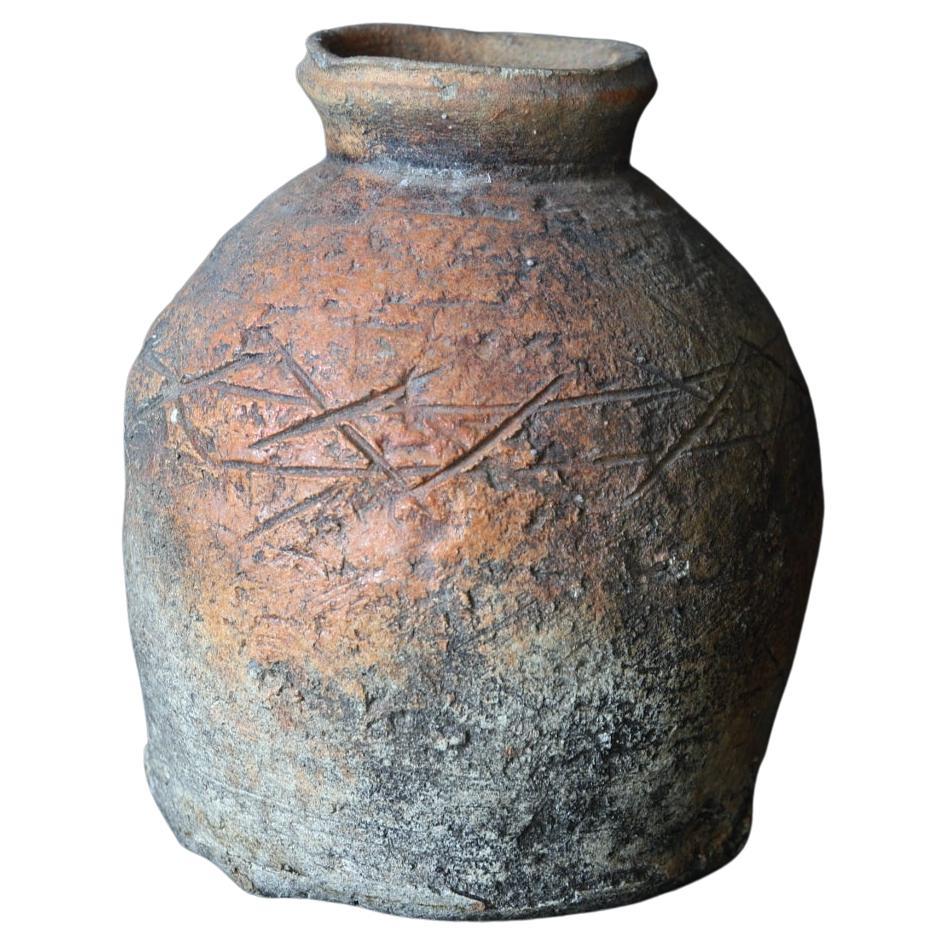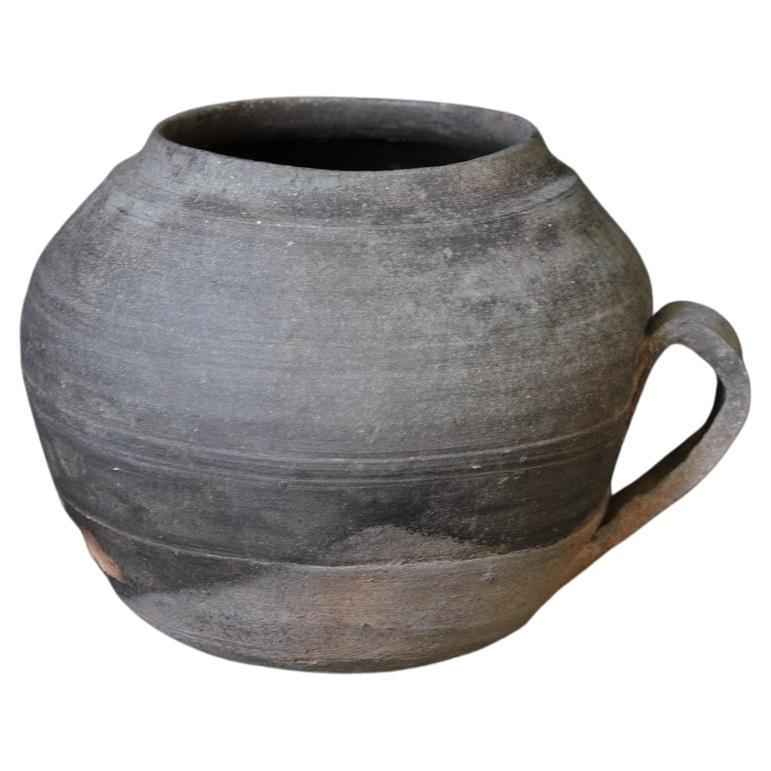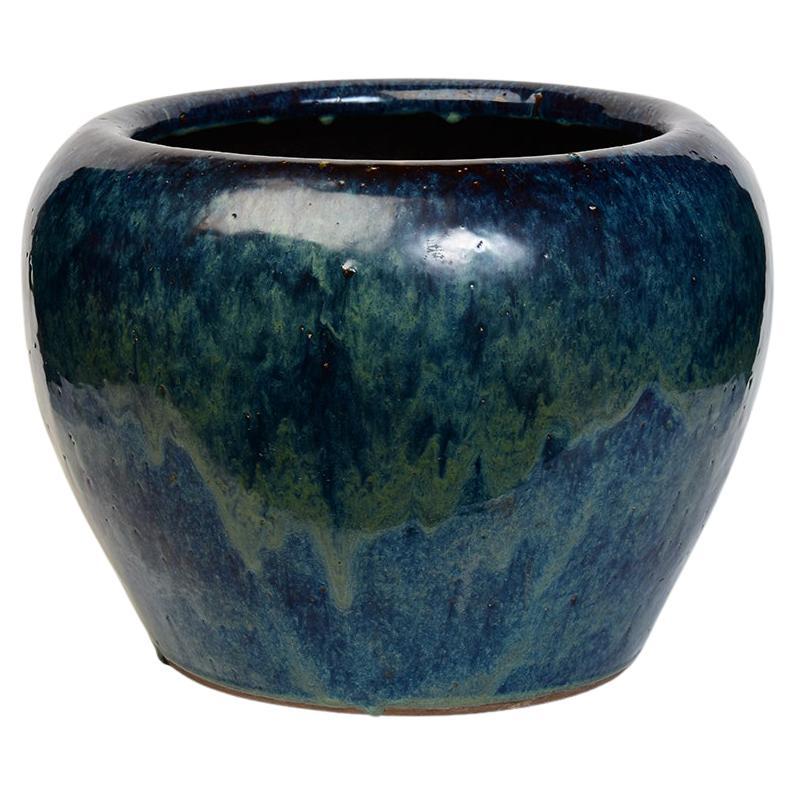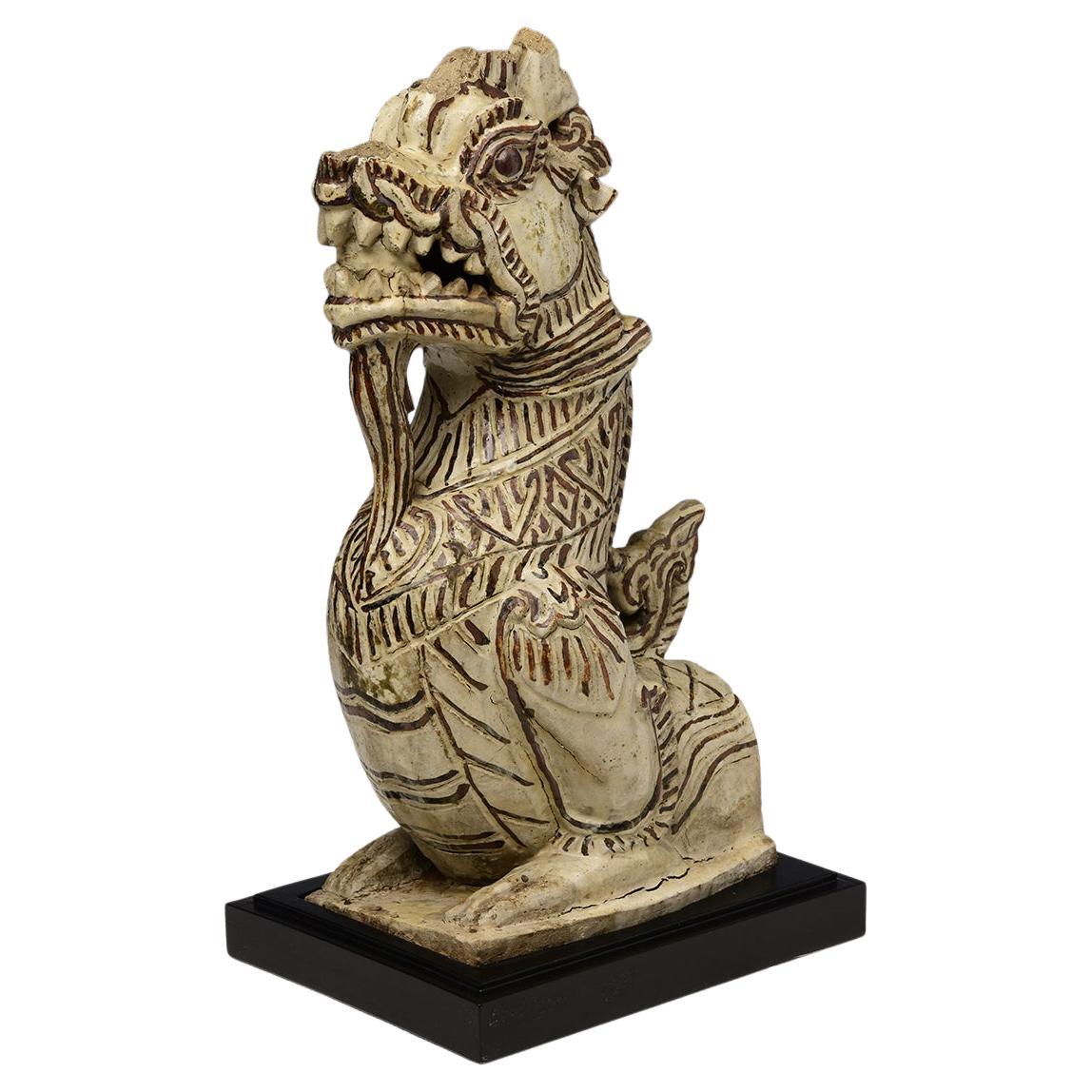Items Similar to Tokoname Sutra Jar, Heian-Kamakura/Japanese Antique/8th-14th Century
Want more images or videos?
Request additional images or videos from the seller
1 of 20
Tokoname Sutra Jar, Heian-Kamakura/Japanese Antique/8th-14th Century
About the Item
This is an old Tokoname sutra jar from the Heian to Kamakura periods. It has a shape that traces the lineage of medium-sized Sue ware pots, and is a unique type of Tokoname pottery that has been fired in large numbers since the early 12th century in the central part of the Chita Peninsula in Japan. It has a trumpet-shaped mouth that bulges out slightly from a small hill in the shape of a half-moon. It has a unique presence. Comes with identification box.
- Dimensions:Height: 17.72 in (45 cm)Width: 19.69 in (50 cm)Depth: 18.12 in (46 cm)
- Materials and Techniques:
- Period:
- Date of Manufacture:794-1333
- Condition:Repaired.
- Seller Location:Kyoto-shi, JP
- Reference Number:1stDibs: LU7673232724022
About the Seller
No Reviews Yet
Vetted Seller
These experienced sellers undergo a comprehensive evaluation by our team of in-house experts.
Established in 2012
1stDibs seller since 2022
- ShippingRetrieving quote...Ships From: Kyoto-shi, Japan
- Return PolicyA return for this item may be initiated within 2 days of delivery.
More From This SellerView All
- Antique Shigaraki Jar "Uzukumaru"/Japanese Vase/14th-16th Century/Wabi-SabiLocated in Kyoto-shi, KyotoDuring the Muromachi Period (1392–1573), the concept of wabi-sabi was formed from the tea ceremony culture. Shigaraki ware was greatly influenced by the aesthetic sense of tea masters in the flow of the times. This product is a small jar called "UZUKUMARU", which was used by farmers as a pot to store seeds. The higaki pattern drawn on the body is unique to Shigaraki. It is said that it is modeled after a shimenawa rope or the bamboo fence...Category
Antique 15th Century and Earlier Japanese Antiquities
MaterialsCeramic
- Sue Ware /Antique Japanese vase/4th-8th century/Wabi-sabiLocated in Kyoto-shi, KyotoThis cup is an example of the type of stoneware known as Sue ware, produced from the middle of the fifth until the fourteenth century in Japan. This produc...Category
Antique 15th Century and Earlier Japanese Antiquities
MaterialsPottery
- Celadon Incense Burner with Peony Arabesque Design/Chinese Antique/14th-17th CLocated in Kyoto-shi, KyotoThis is a Celadon three-legged incense burner with peony arabesque design. Since the 14th century, Dwarf sedge was planted in this pot to decorate the tea room, so in Japan it is ...Category
Antique 15th Century and Earlier Antiquities
MaterialsCeramic
- Moon Jar / Korean Antique vase / Joseon Dynasty / 18th CenturyLocated in Kyoto-shi, KyotoIt's a wonderful moon jar. It is a rare size that is suitable for the alcove of a Japanese tea room. It is shaped at once without connecting the uppe...Category
Antique 18th Century Korean Antiquities
MaterialsCeramic
- Moon Jar 'Dalhanari', Lot3 / 17th Century / Korean Antiques / Joseon DynastyLocated in Kyoto-shi, KyotoThis is a white porcelain jar from the mid-Joseon period, also known as a "Talhunari" or "moon jar". During the Joseon Dynasty, which was strongly influenced by Confucianism, the purity of white porcelain was particularly prized in its artistic expression due to its Confucian sensitivity. The defining characteristic of white porcelain during this period was its pure white color, but there were many subtle variations in the white hues, with some being classified as milky white, snowy white, ashen white, and bluish white. The term "Talhunari" means "moon jar" in Korean, and it refers to the large, round shape of the jar, resembling a full moon. It was named by Kim Whanki, a representative abstract painter of Korea. The soft, curving lines and sturdy body that seems to embrace the full moon give the jar both power and tranquility. This type of jar was produced in large quantities during the 17th century. The white of the moon jar is not the pure white of early Joseon porcelain...Category
Antique 17th Century Korean Ceramics
MaterialsCeramic, Porcelain
- Moon Jar 'Dalhanari' - Lot2 / 17th Century / Korean Antiques / Joseon DynastyLocated in Kyoto-shi, KyotoThis is a white porcelain jar from the mid-Joseon period, also known as a "Talhunari" or "moon jar". During the Joseon Dynasty, which was strongly influenced by Confucianism, the purity of white porcelain was particularly prized in its artistic expression due to its Confucian sensitivity. The defining characteristic of white porcelain during this period was its pure white color, but there were many subtle variations in the white hues, with some being classified as milky white, snowy white, ashen white, and bluish white. The term "Talhunari" means "moon jar" in Korean, and it refers to the large, round shape of the jar, resembling a full moon. It was named by Kim Whanki, a representative abstract painter of Korea. The soft, curving lines and sturdy body that seems to embrace the full moon give the jar both power and tranquility. This type of jar was produced in large quantities during the 17th century. The white of the moon jar is not the pure white of early Joseon porcelain...Category
Antique 17th Century Korean Antiquities
MaterialsCeramic, Porcelain
You May Also Like
- 19th Century, Meiji, Antique Japanese Ceramic JarLocated in Sampantawong, THJapanese ceramic jar. Age: Japan, Meiji Period, 19th century Size: Height 33.6 C.M. / width 40 C.M. Condition: Nice condition overall. 100% satisfaction and authenticity guaranteed...Category
Antique 19th Century Japanese Antiquities
MaterialsCeramic
- 19th Century, Meiji, Antique Japanese Ceramic JarLocated in Sampantawong, THJapanese ceramic jar. Age: Japan, Meiji Period, 19th century Size: Height 34 C.M. / Width 46.2 C.M. Condition: Nice condition overall. 100% satisfaction and authenticity guarantee...Category
Antique 19th Century Japanese Antiquities
MaterialsCeramic
- 19th Century, Meiji, Antique Japanese Ceramic JarLocated in Sampantawong, THJapanese ceramic jar. Age: Japan, Meiji Period, 19th century Size: Height 33.4 C.M. / width 44.7 C.M. Condition: Nice condition overall. 100% satisfaction and authenticity guarante...Category
Antique 19th Century Japanese Antiquities
MaterialsCeramic
- 14th-16th Century, Sukhothai, Antique Thai Sukhothai Stoneware NagaLocated in Sampantawong, THAntique Sukhothai stoneware Naga. Age: Thailand, Sukhothai Period, 14th - 16th Century Size of Naga only: Height 38.5 cm. / width 16.3 cm. / length 19 cm. Size including stand: Heig...Category
Antique 15th Century and Earlier Thai Antiquities
MaterialsPottery
- Pre-Khmer Pottery Pouring Vessel, Kendi, 6th-8th Century, CambodiaLocated in Austin, TXAn evocative large pottery pouring vessel, kendi, pre-Khmer, 6th-8th century, Cambodia. The large kendi of typical form, with a bulbous body set on a...Category
Antique 15th Century and Earlier Cambodian Ceramics
MaterialsPottery
- Large Pre-Khmer Pottery Pouring Vessel, Kendi, 6th - 8th Century, CambodiaLocated in Austin, TXA large and attractive pre-Khmer red pottery kendi, pouring vessel, 6th - 8th century, Cambodia. The large vessel crafted of a red pottery, with a wid...Category
Antique 15th Century and Earlier Burmese Ceramics
MaterialsPottery
Recently Viewed
View AllMore Ways To Browse
Antique Numbers
12th Century
14th Century Furniture
Japanese Ceramic Art Pottery
Lineage Furniture
Japanese Old Pottery
Japanese Antiques Ceramic
Large Japanese Pottery
Small Antique Pottery
15th Century Japanese
15th Century Japan
Types Of Antique Pottery
Antique Japanese Jar
Large Pottery Jar
Pottery Large Jar
Antique Fire Boxes
Antique Old Jars
Antique Old Jar





